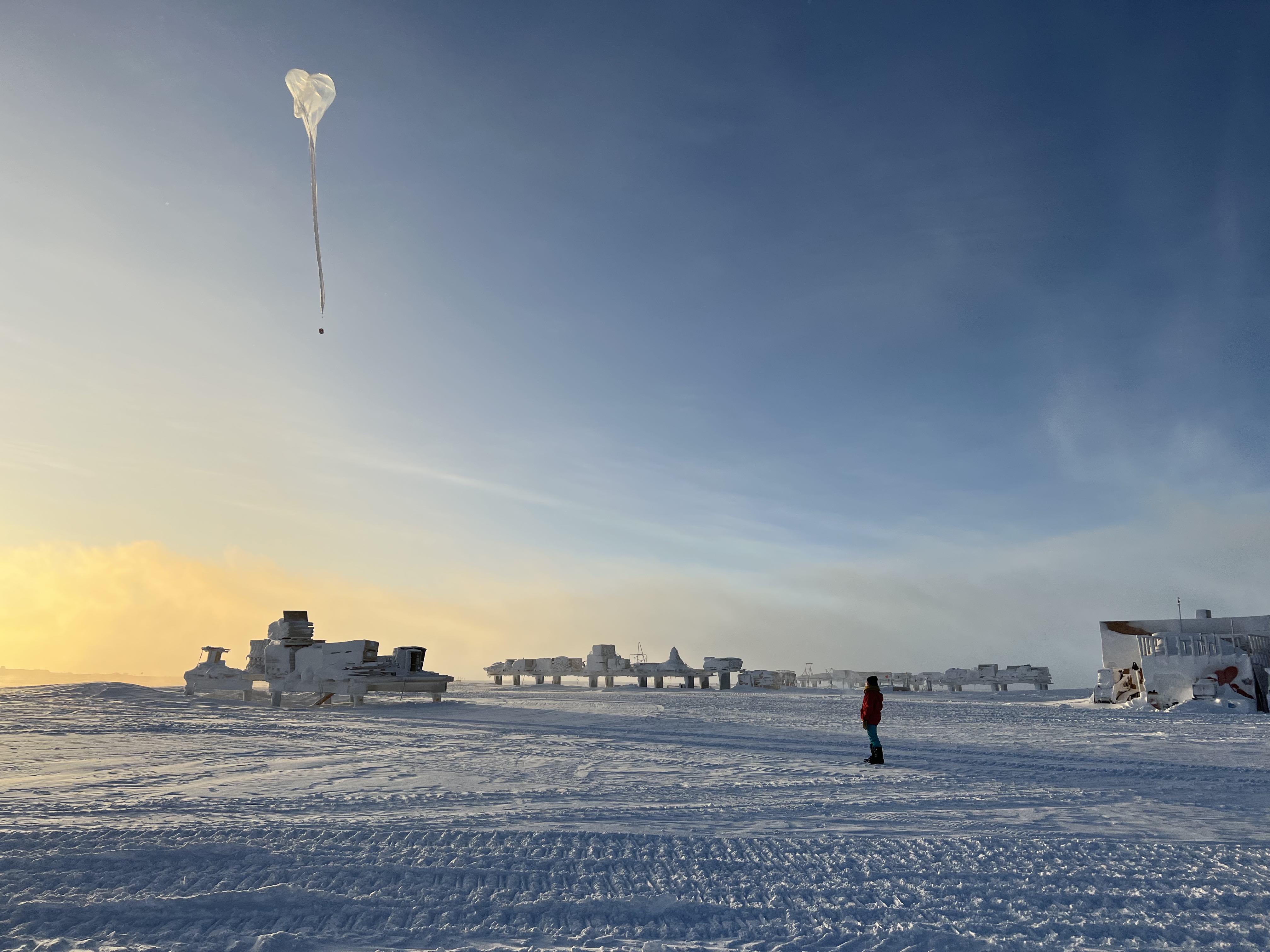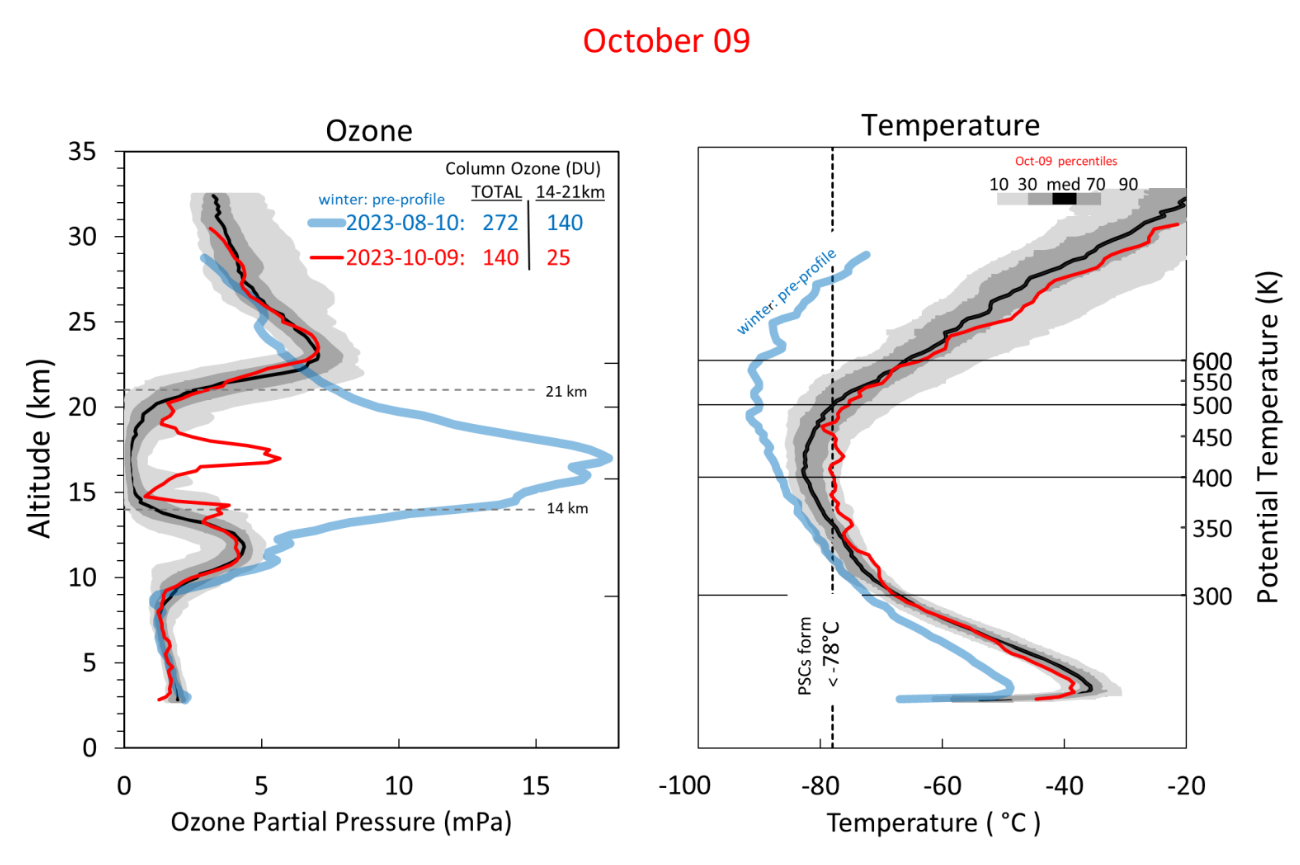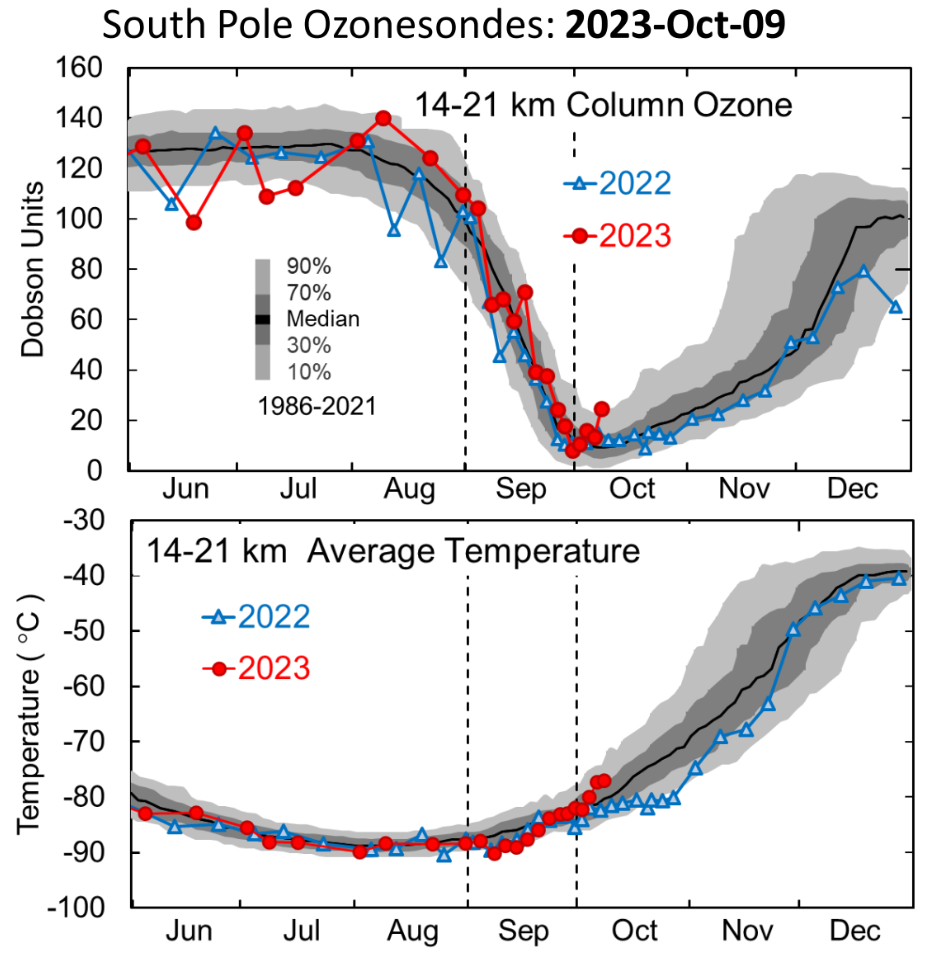
By Patrick Cullis, NOAA Global Monitoring Laboratory scientist
There were two more ozonesondes flown from the South Pole over the long weekend and both measured significantly more ozone, as it looks like the vortex is closing up and warmer air is mixing in over Antarctica.

On the October 9 ozone plot (above left), the red line shows a large bump in ozone at 17km. Typically on this date, ozone in this layer is almost completely zero, as seen with the historical measurements in gray. Reminder: the 14-21km layer is the primary region for ozone depletion.
Also, on the October 9 temperature plot (above right), we are now almost entirely above the -78C limit for polar stratospheric cloud formation–which means that chemical depletion of ozone is over and we are now “filling back in.”

Here’s a good look at ozone and temperatures in the primary depletion region for the last two years, on top of the measurements since 1986, as shown by the grey shading. From this figure, it definitely looks like we are separating from the 2022 measurements, which remained stable for a long time because of an unusually strong polar vortex.
